How To Get A Trash Can From The City
Shrouded in toxic smog, New Delhi has shut down schools and workplaces. Though nations pledged to move away from coal at the UN climate summit, India is reluctant to replace the polluting fuel source.
People in New Delhi are preparing for the possibility of another lockdown — but this one has nothing to do with COVID-19.
With air pollution reaching hazardous levels in the Indian capital and nearby suburbs in recent days, authorities have resorted to emergency measures. Schools have been closed for a week, and construction sites are sitting idle.
And, on Monday, India's Supreme Court ordered millions of office workers to stay home to keep vehicles off the roads, also suggesting a two-day lockdown to help cut down on pollution. Air quality has deteriorated to such an extent that many people have even been forced to wear masks indoors.
"I am happy that the court has intervened. Every year, without fail, the air gets from bad to worse in November and nothing is ever done," Vinita Garg, a homemaker and one of the city's 20 million residents, told DW. "Thanks to air pollution, my kids always get a runny nose and cough. How can we continue to live like this if the air is so bad?"

Air quality in New Delhi, regularly ranked as one of the world's most polluted cities, was nearing the upper limits of the federal pollution scale on Tuesday — a "severe" level that "affects healthy people and seriously impacts those with existing diseases," according to the state Central Pollution Control Board. A recent study by Environmental Research magazine showed that air pollution is the cause of more than 2.5 million deaths in India each year.
"Many families are now experiencing one or more ailments due to polluted air in Delhi," said Promilla Bhutani, a pediatrician with offices in the city's south. "The worst affected are children who have to go to school in this toxic weather. I hope there is some improvement now that the court has intervened."
Many factors behind air pollution
The city's pollution problem is especially bad in late fall and early winter, when prevailing weather patterns mean pollutants from heavy industry and coal-fired power plants, in addition to smoke from burning crop waste in the neighboring states of Haryana, Punjab and Uttar Pradesh, smother the megacity in toxic gray smog.
"Close to 25, 30% of the pollution can actually be attributed to stubble burning," said Tanushree Ganguly, an air quality researcher with the New Delhi-based Council on Energy, Environment and Water (CEEW).
"But as we get deeper into winter, particularly the December-January period, you'll find that … people who don't have access to electric heat, they rely on biomass for their space heating needs," she added, referring to fuels such as wood, cow dung or crop residues.
Ganguly told DW that the city needed "more significant" reductions in emissions from all sources, especially during the winter period.
Reliance on fossil fuels
Air pollution, primarily from the burning of fossil fuels, is a serious problem in Indian cities. After China and the United States, India is the world's third-largest emitter of carbon dioxide, which contributes significantly to global warming.
A large part of those emissions come from coal. The country has nearly doubled its coal consumption over the last decade to keep pace with its booming economy, with the cheap fossil fuel providing around 70% of its electricity. And instead of scaling back its use, the government has announced plans to expand coal power plants and mining operations.
Speaking at the COP26 climate summit in Glasgow, Scotland — where delegates struggled to agree on a deal described by UK Prime Minister Boris Johnson as "the beginning of the end for coal power" — India's Environment Minister Bhupender Yadav insisted that developing economies were "entitled to the responsible use of fossil fuels." Critics have said a last-minute intervention by major polluters like India and China to weaken anti-coal pledges and "phase down" rather than "phase out" coal were a setback to the world's climate goals.
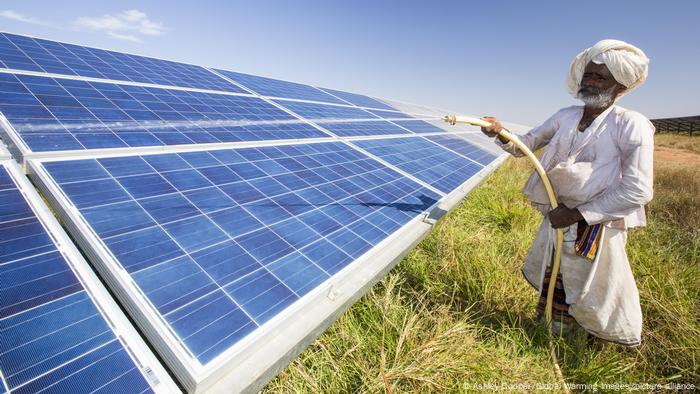
Solar power is an option as India slowly begins its shift to renewables, but financing remains key
But Environment Minister Yadav argued that developing economies shouldn't be included in the same category as the world's biggest per-capita emitters, with their higher average incomes and economic growth rates.
"In such a situation, how can anyone expect developing countries to make promises of phasing out coal and fossil fuel subsidies?" he asked. India has committed to going carbon neutral by 2070, 10 years after China and decades later than other major emitters like the US and the European Union.
From coal to solar?
"For a fast-growing economy with low income, this is the reality," said Vaibhav Chaturvedi, an economist and fellow at the CEEW think tank. "The fast-growing economy needs all the fuels that are available to us, to aid in the development process." Millions of Indians still lack basic amenities like electricity, health care and safe drinking water.
Chaturvedi told DW that the coal sector, which he says is crucial to that growth, would continue to expand in India over the next two decades, albeit slowly. At the same time, he said renewable energy will also take off — if it can secure the necessary funding.
The Modi government has pledged to scale up renewables and make solar power as important as coal by 2030, but India still relies heavily on expensive technology from abroad.
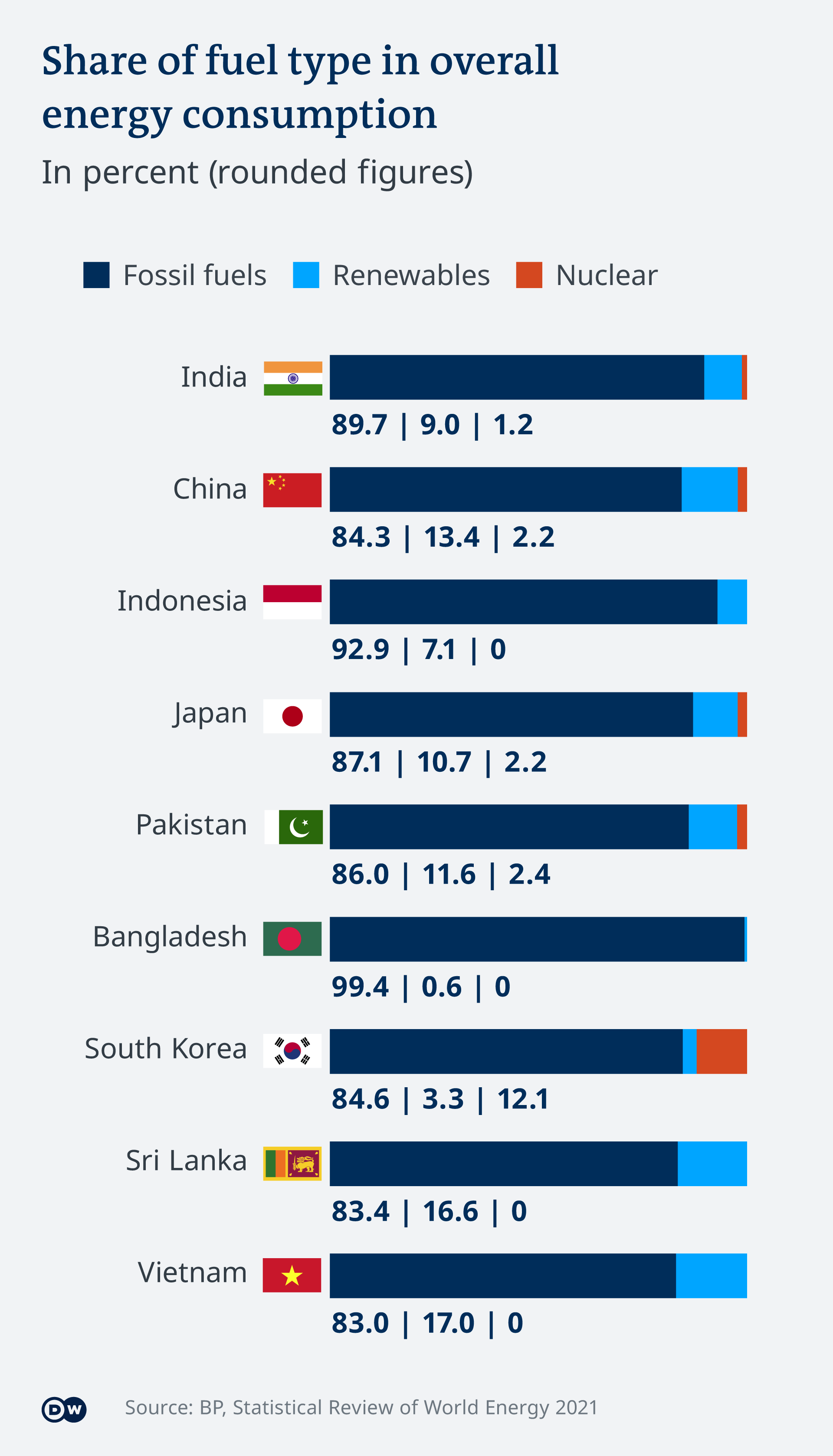
"India is in a very different situation than US or China," said Pao-Yu Oei, a professor for economics of sustainable energy transition at Europa-Universität Flensburg in northern Germany, pointing out that the country's CO2 emissions per capita are still much lower than other major economies. "[India's] rising economy has resulted in increasing electricity needs which are even bigger than the uptake of renewables."
Oei said financial support was crucial to help India make the transition to renewables, a view shared by Chaturvedi.
"Only by reducing the cost of finance will [we] be further able to reduce the cost of solar electricity, and thus accelerate its absorption into the grid," he said. "Whether it actually materializes or not … is a really big impediment in terms of getting solar off the ground in India."
Chandra Bhushan, head of the Delhi-based International Forum for Environment, Sustainability & Technology, told DW that despite claims made by the Delhi government, pollution has only worsened in recent years. And it wasn't going to be solved by simply shutting the city down for a few days.
"We will have to work with millions of households to eliminate biomass as cooking fuel, work with millions of farmers to restore land and stop stubble burning and work with hundreds of thousands of industries to reduce pollution from coal," he said.
"There is no easy way out."
Additional reporting by Murali Krishnan in New Delhi
Edited by Jennifer Collins
-
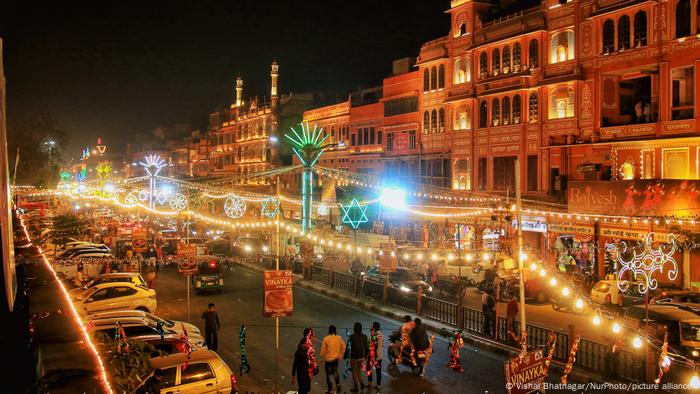
India celebrates Diwali under a cloud of coronavirus, toxic air
Coronavirus, pollution scale back Diwali celebrations
Millions of people across India celebrated Diwali, the Hindu festival of lights, on Saturday, but the festivities were scaled down considerably as India reported nearly 8.8 million coronavirus infections, the world's second-highest caseload. While most stayed away from large, ostentatious celebrations, people found ways to make their Diwali special.
-
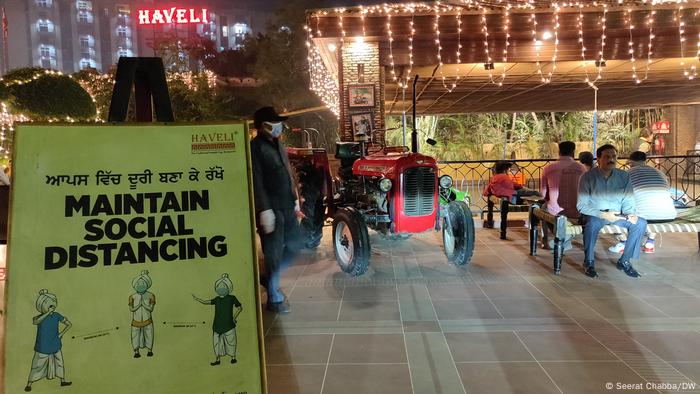
India celebrates Diwali under a cloud of coronavirus, toxic air
Socially distanced celebrations
In large cities, authorities enforced strict protocols including mandatory face masks and social distancing in public places. Similar guidelines were tough to implement in smaller towns, where coronavirus fatigue seemed to complement the festive spirit.
-
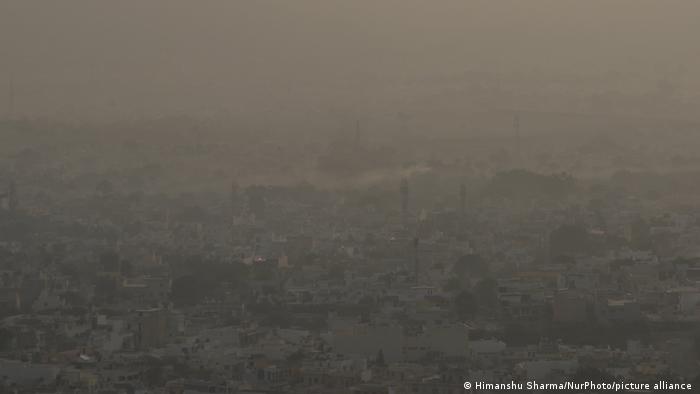
India celebrates Diwali under a cloud of coronavirus, toxic air
Worsening air quality
As many cities in northern India saw a massive dip in air quality, state governments took strict steps to ensure that the celebrations do not add to the toxicity. Firecrackers are a big part of Diwali for many, but many states enforced blanket bans while others allowed it for limited timeframes. New Delhi saw multiple instances of people flouting the ban while turned to a cleaner celebration.
-
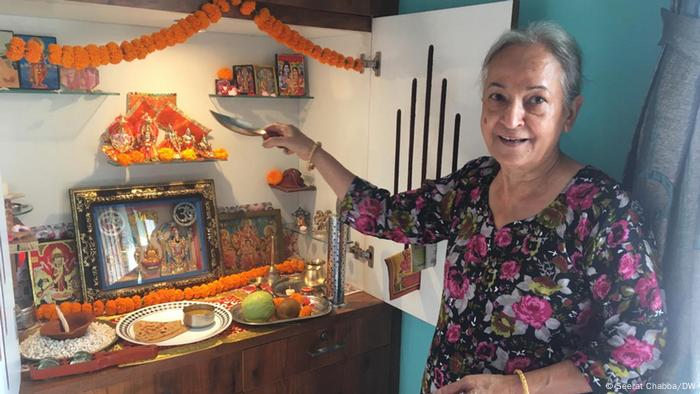
India celebrates Diwali under a cloud of coronavirus, toxic air
Auspicious start to the day
Varsha Khullar, a resident of India's eastern city of Kolkata, woke up before sunrise to bathe and start the day with an elaborate prayer at her in-house temple. She bought fresh fruits and flowers to adorn the small temple, which many people set up in their homes. For devout Hindus, the "pooja" is the most crucial part of their Diwali celebration.
-
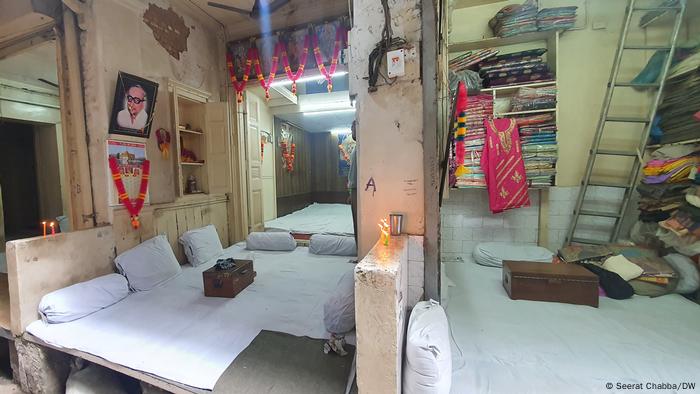
India celebrates Diwali under a cloud of coronavirus, toxic air
Prosperity for businesses amidst slowdown
Businessowners — both small and large — seek to usher in prosperity and wealth every Diwali, and the first step for that is blessing their place of work with another "pooja." Sachin Mehra owns multiple shops across the northern city of Amritsar. He began his morning with prayers at all stores that are meant to bring growth, especially at a time when the economy suffers due to the pandemic.
-
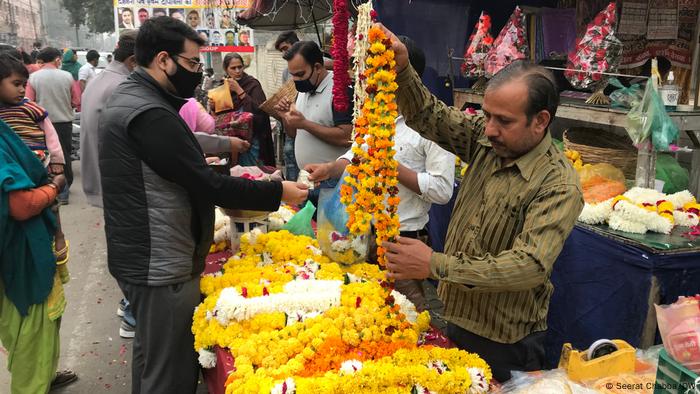
India celebrates Diwali under a cloud of coronavirus, toxic air
Fresh flowers as household favorites
Many people could be seen on the streets as they finished their last-minute preparations for the festivities. Fresh flowers were high in demand, as these are used for the prayer ceremonies as well as decor. Traditionally, most households spend days cleaning up and getting themselves ready for Diwali.
-
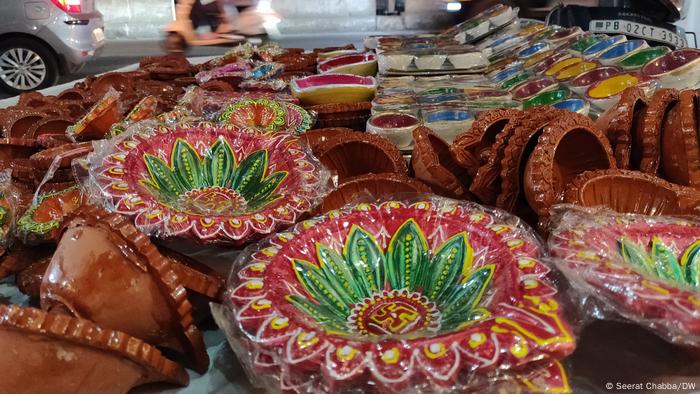
India celebrates Diwali under a cloud of coronavirus, toxic air
Last-minute shopping
Earthen oil lamps, popularly known as "diyas," form another big part of Diwali each year. The pandemic could not change that. Multiple street vendors took out their carts and loaded them with handmade decorative lights that are said to usher in light and positivity. Even as many people move to electric string lights, most houses have a few oil lamps lit in line with tradition.
-
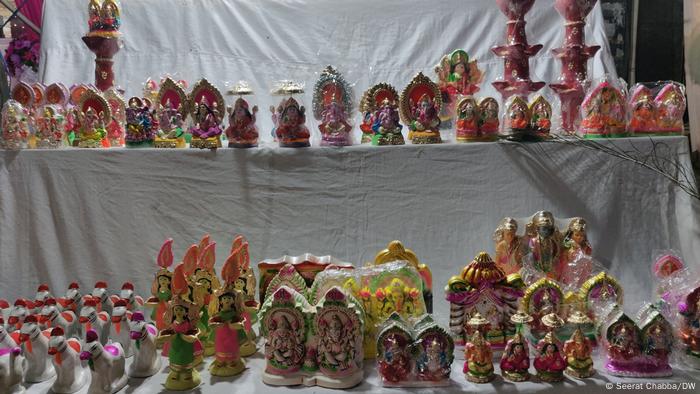
India celebrates Diwali under a cloud of coronavirus, toxic air
Land of colorful gods and goddesses
In addition to fresh flowers and oil lamps, people also stepped out to buy brightly colored idols of Hindu gods and goddesses, like Lakshmi, the goddess of prosperity, or the elephant god Ganesha. There are also several regional Diwali traditions in India, which may involve the worship of other gods.
-
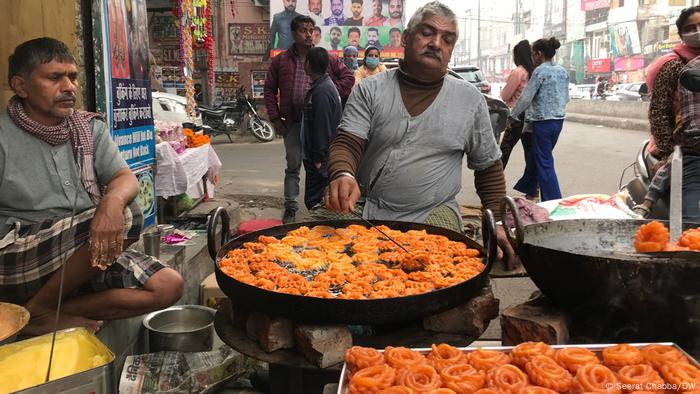
India celebrates Diwali under a cloud of coronavirus, toxic air
Long lines outside sweets shops
Food forms a big part of any celebration and Diwali is closely linked to boxes of sweets. Kanha Sweets, a local shop in Amritsar, had a long line of patrons waiting to get their hands on a box of traditional Indian sweets. Two doors down, another popular sweet shop had a queue running around the block.
-
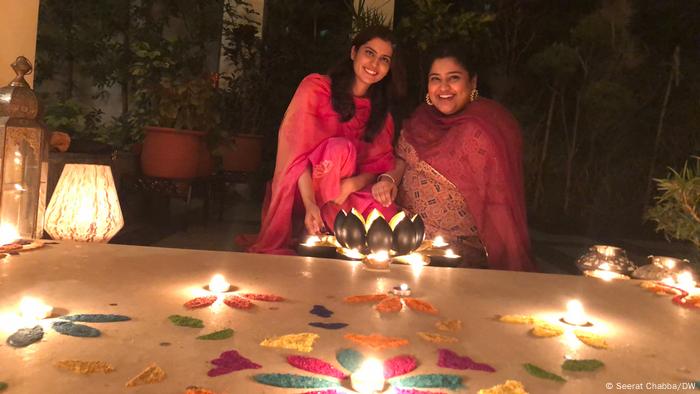
India celebrates Diwali under a cloud of coronavirus, toxic air
Painstaking efforts with folk art
An important Diwali tradition involves making colorful designs outside homes. Better known as rangoli, colorful patterns are made using colored rice, colored sand or fresh flowers. Sabrina Sidhu and Manreet Khara spent the better part of their morning drawing intricate patterns at the entrance to their home. As the evening drew closer, they put in oil lamps and candles to illuminate their designs.
-
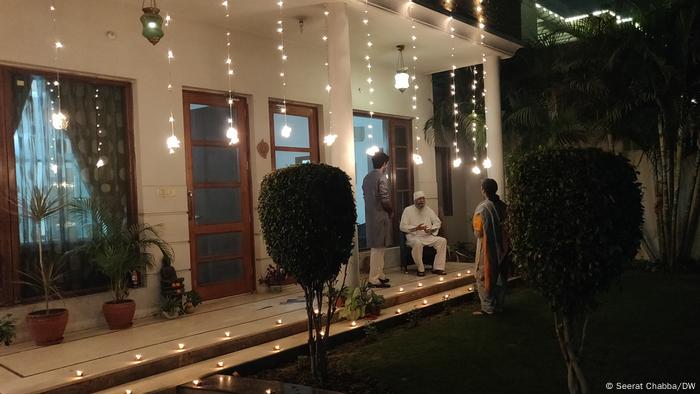
India celebrates Diwali under a cloud of coronavirus, toxic air
Festival of lights
Lighting up the house is an important ritual associated with Diwali. Even as most people avoided large-scale celebrations because of the pandemic, the lights were not dimmed. The day was spent decorating their homes with long strings of lights, oil lamps, and candles, all of which were lit up once darkness fell.
-
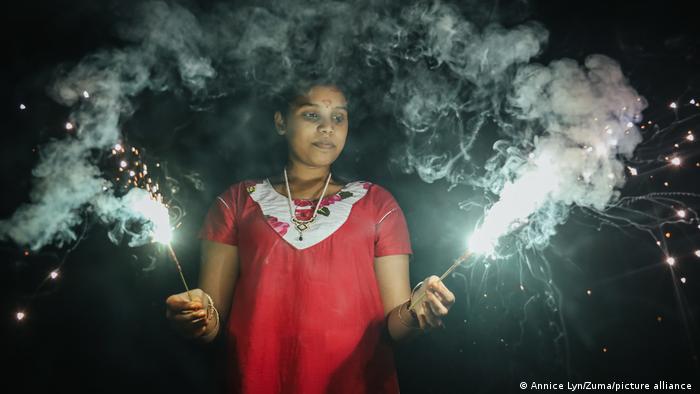
India celebrates Diwali under a cloud of coronavirus, toxic air
Choking on smoke
While some people swore off firecrackers completely, others used the government-designated time to light sparklers and other smaller crackers. In some cities, louder crackers could be heard until late in the night, well past the permitted times. Most got away with it citing holiday spirit, but local police in different parts of the country have registered some cases.
-
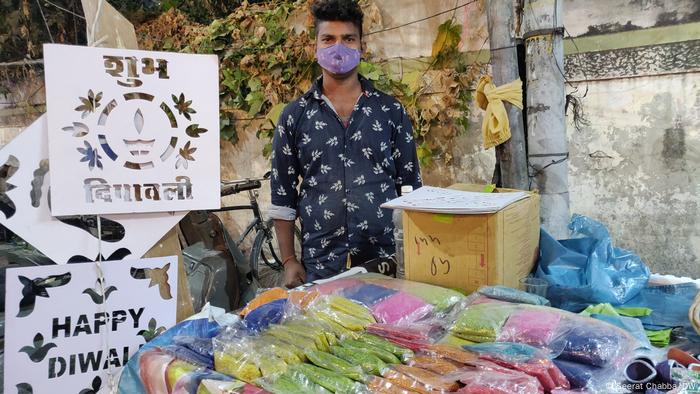
India celebrates Diwali under a cloud of coronavirus, toxic air
Ray of light through darkness
Diwali in a pandemic is not easy, but, for many Indians, it signaled a return to relative normalcy. For Rahul, who ran a small cart with decorative supplies, these celebrations could make all the difference between feeding his family or going to sleep with an empty stomach. Even as people run home to celebrate, he stood by his stall till the final customer stopped by for some "rangoli" color.
How To Get A Trash Can From The City
Source: https://www.dw.com/en/despite-dirty-air-india-struggles-to-move-on-from-coal/a-59837396
Posted by: hurleydickclonsund1952.blogspot.com

0 Response to "How To Get A Trash Can From The City"
Post a Comment